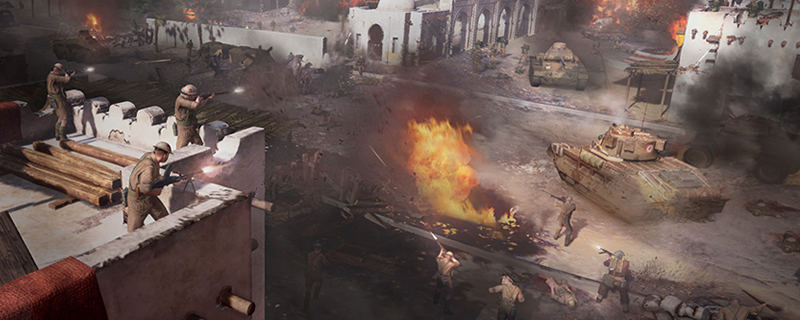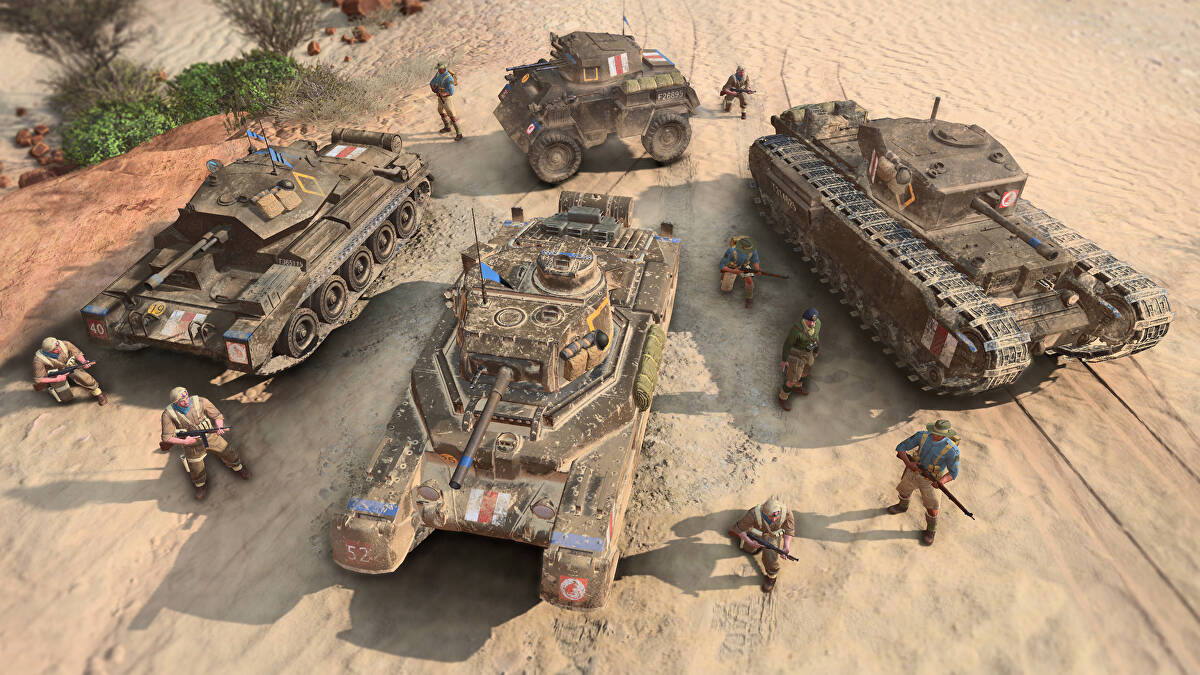Company of Heroes 3 PC Performance Review and Optimisation Guide
Conclusion – Company of Heroes 3 is an excellent game, but we wish Relic were more ambitious
Company of Heroes 3 is an excellent game, and we hope that Relic’s return to the series signals a bright future for the series and the RTS genre in general. In some regards, Company of Heroes blasts pasts its predecessors, but in others it is disappointing that the game does not appear to benefit from the full ten years of hardware advancements that the PC market has seen since the release of Company of Heroes 2.
With regards to model quality and animation quality, Company of Heroes looks fantastic. Individual soldiers reload their weapons, throw away magazines and do so using the same movements that a solider of the era would. Vehicles are incredibly detailed, and the game’s building destruction is a sight to behold. That said, Company of Heroes 3’s shadow quality, lighting, and ambient occlusion lets the game down. Using more advanced technologies for these features would have a huge impact on Company of Heroes 3 would have had a huge impact on the game’s visuals. That said, we understand why Relic has not pushed the graphical envelope with this release.Â
Simply put, the RTS genre is not what it was, and with ten years with no game releases, Company of Heroes is not the brand that it once was. Relic knows that they need their game to run well on a wide variety of gaming systems to succeed, as pushing graphical bounders too far will limit their potential audience.Â
Company of Heroes 3 is a game that should perform well on all modern gaming PCs. Even our old RX 480 and GTX 1060 can deliver stable 60+ FPS framerates at 1080p with only s few settings turned below their maximum. On top of that, shader stuttering is practically non-existent within the game, only appearing early in the game’s tutorial on nowhere else. When changing graphics cards, running the game’s integrated benchmark was enough to push past these stutters, making the so-called “stutter-struggle” effectively a non-factor with this PC release.Â
The primary thing that PC gamers should look out for in Company of Heroes 3 is setting appropriate texture settings for your graphics card. 6GB of VRAM is not enough to run Company of Heroes 3 with its highest texture settings, with medium textures being ideal for GPUs with such a small frame buffer.Â
For those who want higher framerates from Company of Heroes, setting Anti-Aliasing to Low and Shadows to Medium is an easy way to achieve a performance boost, and lowering resolution scale (Game Scale in this case) can help gamers to achieve higher performance levels for those who are crying for more.Â
On the CPU-side, Company of Heroes 3 performs exceptionally well. On our Ryzen 5 5600X, the game could easily run at over 120 FPS at all times when paired with a strong enough GPU. That said, this game is mostly CPU-limited when played with high-end graphics cards, even at 4K when GPUs like Nvidia’s RTX 4090 are used. That said, staying over 120 FPS isn’t exactly a bad place to be, and lowering this game’s physics settings could grab you some extra CPU performance if you demand framerates higher than that.
In all, Company of Heroes 3 is a solid PC game, and a breath of fresh air when compared to many other recent PC launches. There is no “stutter struggle”, and there is no major issues to report. Our only criticism of the game is that we would liked to have seen Company of Heroes 3’s visuals pushed further, though perhaps that is an option that Company of Heroes 4, or a Company of Heroes 3 expansion could deal with, should Company of Heroes 3 prove successful enough to justify them.
You can join the discussion on Company of Heroes 3’s PC version on the OC3D Forums.




